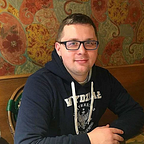Image processing with Python(scikit-image)
Scikit-image is a good library to start with image processing. This an article is a walkthrough for some techniques and tricks to start with image processing.
Read and plot the image
import matplotlib.pyplot as plt
from skimage import io
img = io.imread("image.png") #path to the imageplt.imshow(img)
plt.show()print(img.shape) # show dimension of image
dim1, dim2 = img.shape[0], img.shape[1]
num_channels = img.shape[2]
Read image is a numpy array, this image has 494 on 494 shape and 4 channels. Check what happens, when you change:
plt.imshow(img) --> plt.imshow(img[:,:,0])Change of size of the image
from skimage.transform import rescale, resizedef resized_img(img, scale=2):
image_resized = resize(img, (img.shape[0] / scale, img.shape[1] / scale),anti_aliasing=True)
return image_resized
Show resized images
img = io.imread("image.png")
image_resized = resized_img(img, 2) # I choosed 2, but you could all integersdef plot_compared_img(img1, img2, title1="Original image", title2="New one image"):
fig, axes = plt.subplots(nrows=1, ncols=2, figsize=(20, 10))
ax = axes.ravel()
ax[0].imshow(img1)
ax[0].set_title(title1)
ax[1].imshow(img2, cmap='gray')
ax[1].set_title(title2)
plt.show()
plot_compared_img(img, image_resized,"Original image", "Resized image")
Please note that scale is changed.
Add a noise to image
import numpy as np
k = 0.2 # you could set any any real number
noise = np.ones_like(img) * k * (img.max() - img.min())
noise[np.random.random(size=noise.shape) > 0.5] *= -1img_noise = img + noise # new image with noiseplot_compared_img(img, img_noise, "Original image", "The image with noise")
Comparing images with ssim
from skimage.measure import compare_ssim as ssim
ssim_noise = ssim(img, img_noise,
data_range=img_noise.max() - img_noise.min(), multichannel=True)print(ssim_noise) #0.10910931410753069
Structural similarity index(ssim) indicates on similarity of images.
- Value of ssim equals zero indicates no similarity between images.
- Value ssim equals one suggest that photos are the same.
Above I am comparing original image(img) with img with noise(img_noise).
Convert the image to grey scale
from skimage.color import rgb2graygrayscale = rgb2gray(img)
plot_compared_img(img, grayscale,"Original image", "The image with greyscale")
Entropy of the image
In information theory, information entropy is the log-base-2 of the number of possible outcomes for a message. For an image, local entropy is related to the complexity contained in a neighborhood. More about entropy(Shannon entropy) at link
https://en.wiktionary.org/wiki/Shannon_entropy
from skimage.measure.entropy import shannon_entropy
print(shannon_entropy(img[:,:,0])) #7.5777861360050265#plot entropyfrom skimage.filters.rank import entropy
from skimage.morphology import diskentr_img = entropy(img[:,:,0], disk(10))
plt.imshow(entr_img, cmap='viridis')
plt.show()
Wrapping Up
Of course, it’s only most basics techniques to manipulate or extract features from the image. I encourage to read link from bottom. All code included in jupyter-notebook:
https://github.com/fuwiak/medium_scikit-image
Sources:
